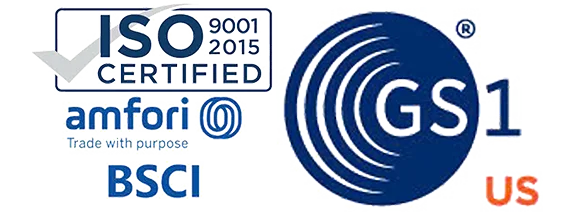The CNC machining process
Developed from computer numerical control (CNC) machining processes using punch cards, CNC is a manufacturing process utilizing computer control to operate and manipulate machines and cutting tools to shape raw materials such as metals, plastics, wood, foam, composite materials, etc., into custom parts and designs.
While the CNC machining process offers various functionalities and operations, the fundamental principles of this process are essentially the same across all of them.
The basic CNC machining process consists of the following stages:
- CAD Model Design
- Conversion of CAD files to CNC programs
- CNC Machine Setup
- Execution of machining operations
CAD Model Design
The CNC machining process begins with creating a 2D or 3D CAD (Computer-Aided Design) detailed solid model either in-house or through CAD/CAM design services. Computer-aided design (CAD) software enables designers and manufacturers to model or render their parts and products, as well as the necessary technical specifications such as dimensions and geometry, required for manufacturing parts or products.
The design of parts to be machined by CNC machines is limited by the capabilities (or lack thereof) of the CNC machine and tools.

CNC Model Design in CNC Machining
For instance, most CNC machines have cylindrical shapes, thus geometric details that can be produced through CNC machining are limited by the tool’s ability to create curved features. Additionally, the properties of the material being machined, tooling design, and machine fixtures further constrain design possibilities, such as minimum part thickness, maximum part size, inclusion and complexity of holes and features.
Tolerance Table for CNC Machining
When specifying parts for a machine shop, it’s crucial to include all necessary tolerances. Despite CNC machines being highly accurate, they still leave some small differences between copies of the same part, typically around + or – 0.005 inches (0.127 mm), which is roughly double the width of a human hair.
To save costs, users should only specify tolerances for areas of the part that need to be particularly accurate as they will interface with other parts. Although there are standard tolerances for different machining grades (as in the table below), not all tolerances are created equal.
For example, if a part can never be larger than a certain measurement, it may have a tolerance specified as + 0.0 / -0.5 to indicate that it can be slightly smaller, but not larger, in that area.
Converting CAD Files
The formatted CAD design files are run through a program, often computer-aided manufacturing (CAM) software, to extract the geometry of the part and generate the digital programming code that will control the CNC machine and manipulate the tools to produce the custom-designed parts.
CNC machines utilize various programming languages, including G-code and M-code. The most common or universally recognized CNC programming language, for general purposes or geometry, is called G-code, which controls the timing, positioning, and movement of the machine tool—e.g., when to open or close, speed of movement to a specific position, where to follow a path, etc.—throughout the machining process. Other function codes, commonly referred to as M-codes, control auxiliary functions of the machine, such as automatically engaging and replacing machine covers when production starts and ends, respectively.
Setting Up CNC Machine
Before an operator can run a CNC program, they must prepare the CNC machine for operation. These preparatory tasks include securing the workpiece directly into the machine, spindle of the machine or machine enclosure, or similar machining equipment, and attaching necessary tools (such as drills and end mills) to the appropriate machine components.
CNC Machining Operations
The CNC program acts as a command to a CNC machine; it sends machine commands directing the actions and movements of the tool to the machine’s integrated computer, which operates and manipulates the machine tool. The startup program will prompt the CNC machine to initiate the CNC machining process and guide the machine throughout the process as it performs the necessary machine operations to produce a custom-designed part or product.
ATT Viet Nam :
ATT Vietnam is also a specialized agent providing high-quality and competitively priced plastic injection molding products. For more detailed information about the plastic injection molding process, please feel free to contact us for further consultation.
Address: Lot 32 Bai Say, Zone Cau Do 5, Ha Cau Ward, Ha Dong District, Ha Noi, Vietnam.
Factory: Lot CN6, Thach That – Quoc Oai Industrial Zone, Thach That District, Hanoi, Vietnam.
Email: [email protected]
Mobile: +84 2432 003 219
Hotline: +84 979 011 304 (Zalo/Whatsapp/Telegram)

